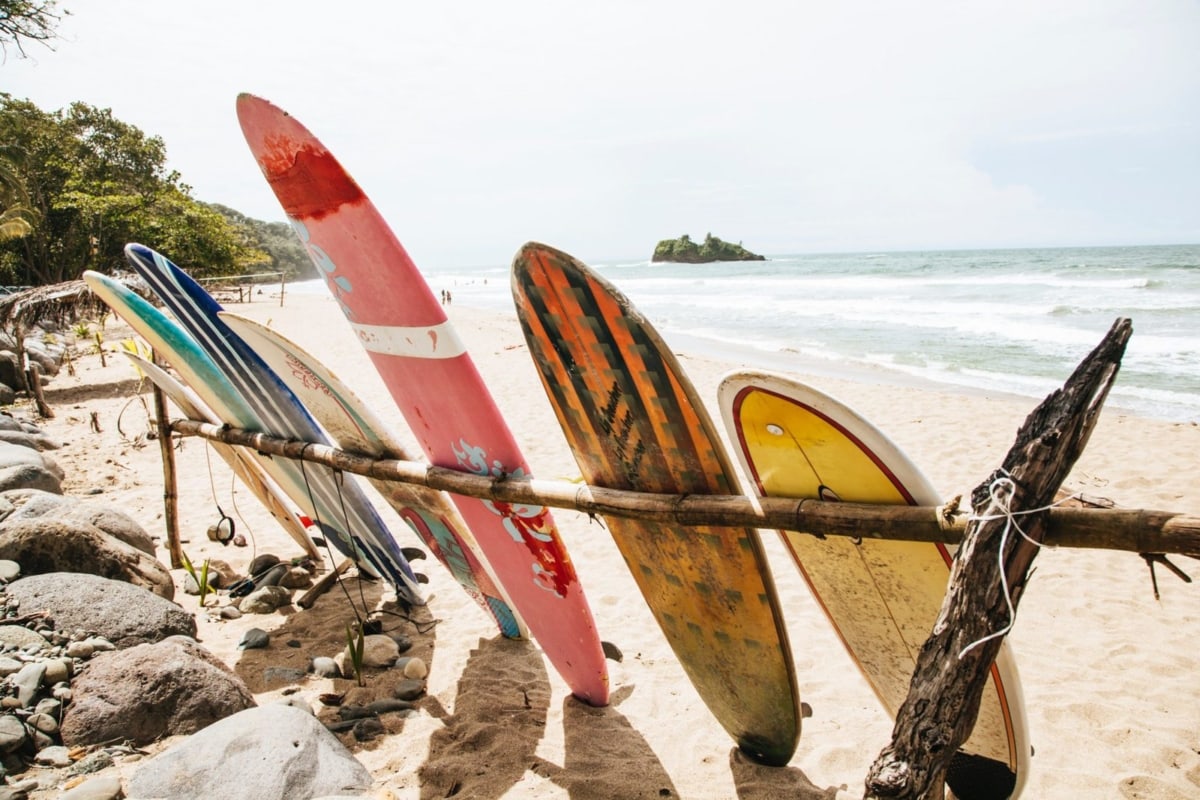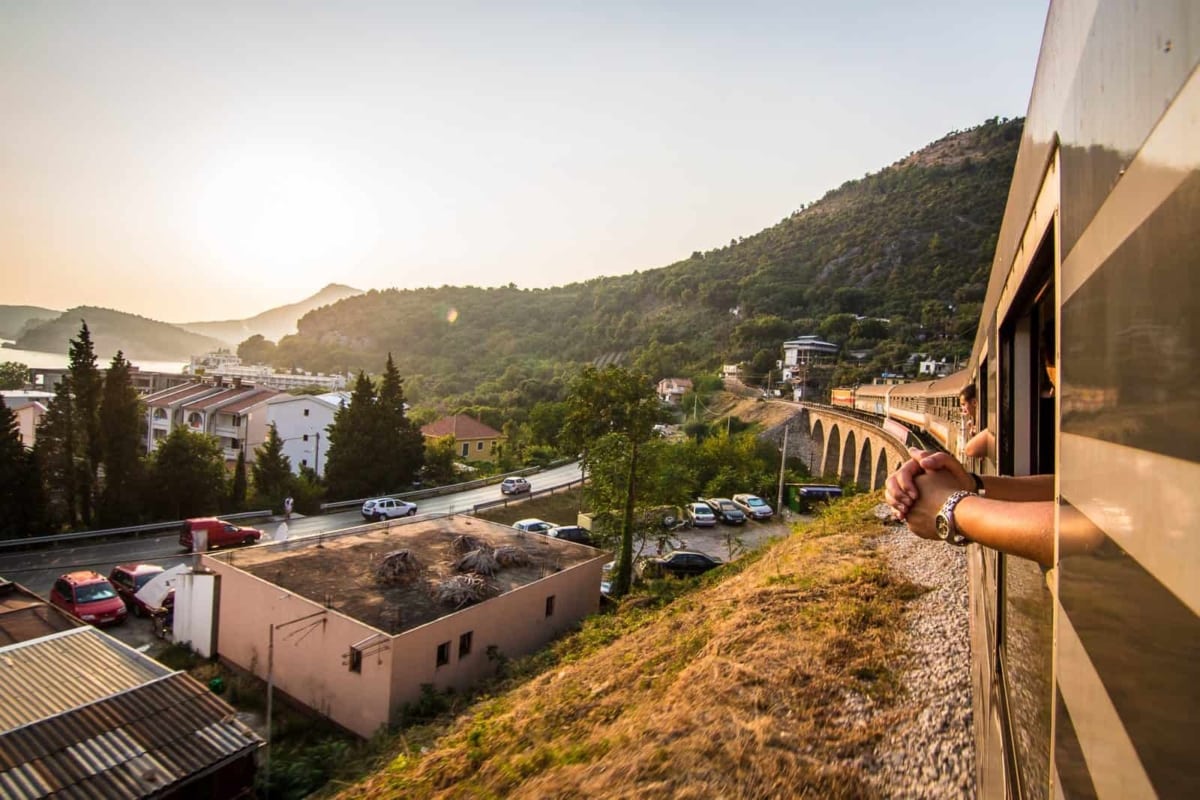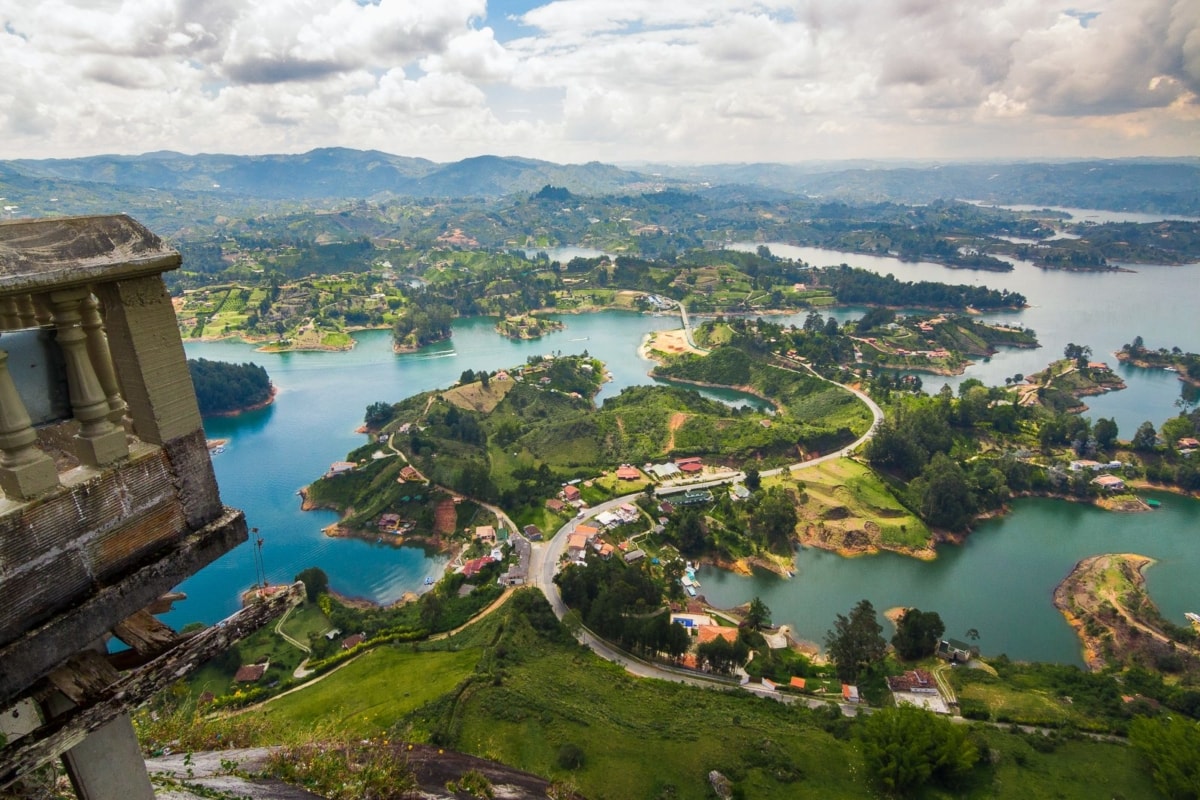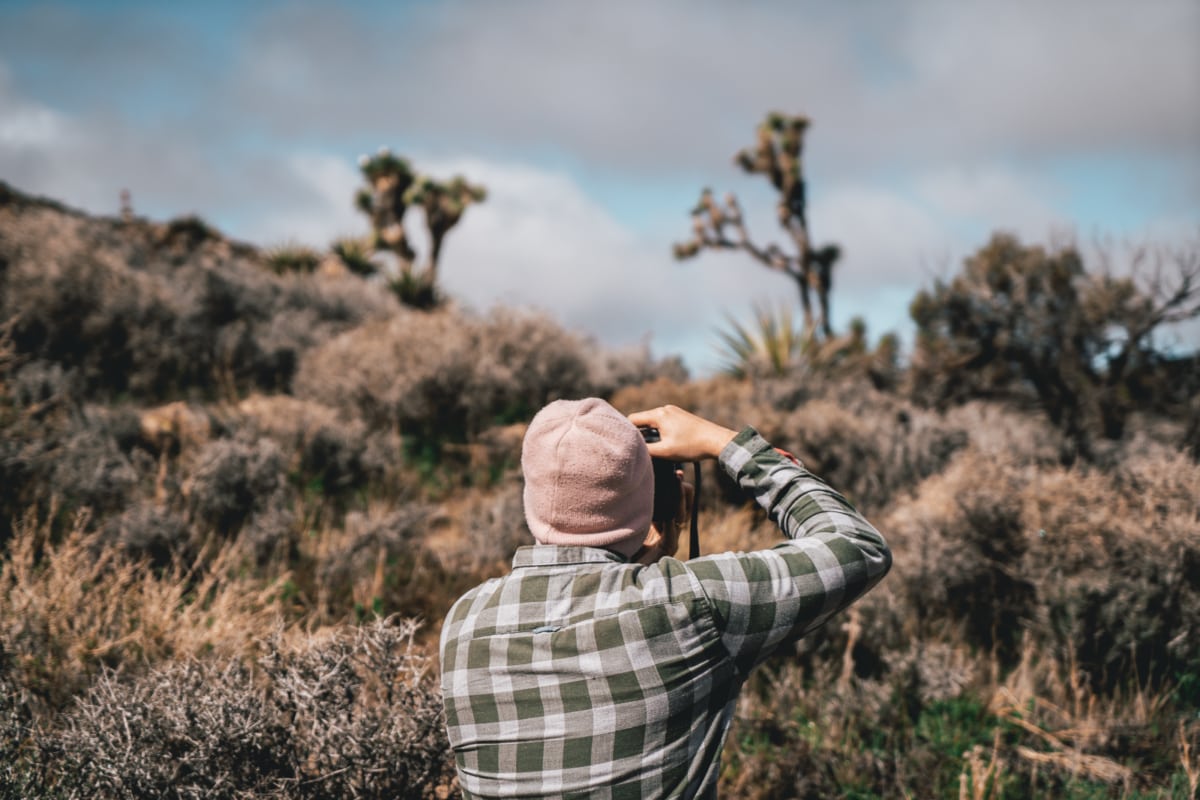Know where you’re going but don’t know anything about it? These are 5 things you should do before visiting an unfamiliar place.
How to Plan a Trip to a Place You Know Nothing About
I’m sitting in a surf camp in a remote, dusty beach town on Costa Rica’s Pacific coast, planning a few days’ respite from the sometimes deafening isolation. And the stress is high.
Howler monkeys are swinging overhead. An iguana is inching closer, making menacing eye contact. And a friend just emailed me an hour-by-hour weekend itinerary in a Google spreadsheet. The chances I bail because I can’t commit to the seven thousand tours of the same cloud forest are not slim. I can’t even commit to the breakfast burritos en route there.
What if I wake up wanting an Açaí bowl?
Despite my rather detailed daily to-do list, I’ve never been much of a planner. Rather, I’m somewhere closer to a commitment phobe—at least when it comes to travel.
A trip planned for two weeks from now, let alone two months from now, doesn’t give me something to which I can look forward. It gives me irrationally crippling anxiety.

I’m more of a go-with-the-wind traveler. It’s not uncommon that I book same-day flights, find accommodation upon arrival or sign myself up for adventures I’d never anticipated. And I’m a huge advocate for this kind of traveling.
Seasoned travelers will assure you that strict itineraries are nothing short of imprisoning. Scheduling your daily doings and onward travel should be done from the ground. You’re bound to meet other travelers, discover different excursions and experience unanticipated feelings about places that’ll almost certainly derail you from itineraries.
But there is some level of figuring out you should do to ensure that you make the most of your time. And to make sure you’re not blindly and blissfully getting yourself into trouble.
Ideally, you’ll spend your time enjoying your trip—not with your nose stuck in your guidebook or, more likely, your phone.
Figure out Your Transportation Routes Before You Travel
While you don’t necessarily need to know where you’re going, it’s helpful to understand how you’ll be getting anywhere.
Navigating public transportation can be one of the most difficult but rewarding experiences while traveling. Something that’s so simple at home becomes inconceivably complex when you don’t speak the language or quite grasp the lay of the land.
Travel apps like Google Maps, Embark and Maps.me will show you navigation routes by several modes of transportation, such as by foot or by car. Meanwhile, using apps like Rome2Rio will help you understand all of your options for traveling from Point A to Point B. You can compare your cheapest and quickest routes, as well, before you even get there.

When traveling on the ground in a place that’s foreign to you, it’s smart to consider all of your options and not just go with the cheapest one. Traveling by bus might mean that you spend less money, but you might have a far more complicated journey.
To save myself hundreds of dollars on travel and accommodation, I’ve recently booked a multi-day bus journey from the Galapagos Islands to Lima, Peru, for example. I won’t be there for a few more weeks, but the plan is a complicated one that required advanced booking.
It involves several overnight bus connections with various different carriers, some of which I had to book on various different sites. There was not direct route, but I found all of these bus routes on Rome2Rio and used Google Maps to determine the beach towns in which I’d break along the way.
Sure, the planning took me a few hours. And, sure, the bus journey will mean I sleep on back-to-back overnight buses and eat gas station meals most nights. But it saved me at least $500 when I consider all of the costs.
You have to decide what level of adventure you’re ready to take on—whether that’s chicken-bus level or air conditioned minivan-level.
Sometimes, splurging for a shuttle with a tour company is an easier (and safer) bet, but you’ll forgo some potential fun.
Book Convenient, Clean and Comfortable Accommodation in Advance
Booking accommodation isn’t easy to do from afar given that you don’t know how convenient, clean or comfortable a place is until you get there. That said, it’s a good idea to book at least a day or two in advance so you have a place to settle when you arrive.
If I’m staying in one place for awhile, I’ll book the week or two that I plan to be there. Because I primarily backpack, however, I usually never book more than one night’s stay. When I arrive at my destination, I’ll drop my backpack and scope out the scene.
Apps like Hostelworld and Booking.com are ideal for finding hostels and hotels, while Airbnb can, of course, be used for a more authentic, home-share experiences.
Aside from using apps, however, talking with locals and other travels who can offer tried-and-true recommendations is incredibly helpful.
As a seasoned traveler, I can tell you this:
- Never book the party place if you’re looking to sleep—and looking to avoid bed bugs. Party-party hostels (as opposed to social hostels) might be fun to visit, but they’re not always so fun to sleep or bathe in.
- When you’re reading reviews, always sort them by the worst reviews first. The good reviews are always somewhat similar (great customer service, comfortable beds, laundry on site, etc.). But the bad reviews are where you’ll dig up the dirty details (bed bugs, sketchy night guard, no hot water, etc.). Of course, some travelers have higher standards than others, and there’s a chance that those guests are overdramatic. But you can usually tell how much truth lies in the negative comments by the quantity of and consistency within them.
- Take location into account. While you might save money by staying just outside the city center, for example, you might end up spending more on traveling to and from there. Depending on the place you’re visiting, you might not even have easy access to the main attractions.
- Scope out social media posts of your options. Beyond reading reviews across various booking sites, you should take a deeper dive on Instagram or Facebook. While booking reviews might give you an idea of what a hostel or hotel has to offer, social media will give you an idea of the vibe each one boasts. Of course, these accounts are curated to appeal to specific demographics, however, so be sure to check their tagged photos, as well.
- Consider the costs of added benefits such as complimentary breakfast and on-site laundry if you plan on staying long term. While seemingly insignificant, these can add up quickly. And you’ll save yourself a lot of time for exploring when you can easily drop off your laundry and grab a bite on your way out the door.
Get the Scoop on Neighborhood Safety Before Finding out the Hard Way
Your safety is important, or you won’t be enjoying any part of your trip.
Read the news. The developed world has a reputation of fear-mongering when it comes to travel to underdeveloped countries especially. So be wary of what you read in large-scale, international publications.
Supplement your daily dose of news with a quick scan through local outlets, as well. You can search these online, most of which can be translated. This way, you can get a better feel for the pressing issues with which locals are actually concerned—and keep tabs on anything that hasn’t made international headlines.
I was traveling in Colombia last month, living in Medellin and planning a weekend in Bogota. When researching what to do in Bogota, I found news of a bomb that changed my plans. The bomb didn’t immediately make international news (though it eventually broke in outlets like the BBC and CNN), but I did read about it first in local sources.

On the contrary, while I was traveling in Costa Rica an American woman was kidnapped. The news made international headlines, which means that I heard about it through my parents before anyone even mentioned word of it on the ground. While the news was certainly horrific, it was an isolated incident that didn’t necessarily mean I was in danger, too. But, of course, family and friends worry, and the media tends to generalize and, thus, exacerbate bad things that happen “over there.”
For a more accurate assessment of your safety, you can reach out to anyone you know who lives there or has lived there on social media or sites like Couchsurfing, a community of travelers and hosts from around the world.
While you can reach out to tour companies and hostel or hotel owners about certain neighborhoods in advance, some might have partnerships with businesses there. As such, their suggestions will inevitably be subjective.
Communicating with other travelers who’ve visited neighborhoods, cities or even countries about which you’re curious is helpful, as well. You might meet them in a nearby country or city before you go. Or you may reach out to them on Couchsurfing, Facebook groups and via trip review forums like TripAdvisor.
They’ll know better than others what safety precautions to take as a traveler in particular. This might include skipping a visit to a certain market where tourists are often pickpocketed, but where regulars and locals might not be bothered. If you want further safety insights, take a look at our list of travel safety tips.
Determine Currencies and Exchange Rates in Your Destinations
Currencies and exchange rates can be confusing, especially as they’re always changing. You should head to a bank or secure ATM when you arrive at your destination to take out cash. But you’ll need to know how much to take out in the local currency before you even get there.
- Apps like GlobeConvert offers live exchange rates with an offline mode, so you can use it while there even when you don’t have WiFi.
- XE Currency is another free app. This one allows you to view live mid-market rates via an interactive chart. It’s available up to a 10-year time period.
If you have cash to exchange (as opposed to taking money out from the bank or an ATM), you’re better off taking out cash at an exchange company at home than you are at the airport or in touristy cities (where most exchange booths are), where you’ll likely get the worst exchange rate.
Better yet, exchange cash with other travelers if you find anyone with whom you’re swapping destinations. Often, you can find Facebook pages designated for travelers, digital nomads and expats living in popular tourist destinations. On these pages, you can communicate with others in the area who may be traveling a similar route and could use those Guatemala Quetzal you’ve been tried to get rid of in exchange for their Costa Rican Colones.
I’m on my way to Peru and just crossed paths with a traveler coming from there. She gave me her Sol in exchange for my dollars, which she’ll use here in Ecuador, where we now are.
You can also join programs such as Nomad List. This shares the best cities in which to live and work remotely. It’s based on the cost of living, internet speed, weather and other metrics. More helpful in this case, however, is that Nomad List boasts a Slack channel. There are more than 6,500 nomads working and living in each city. You can easily find others with whom to swap currencies before you go, as well.
Uncover the Local Secret Spots Before You Arrive
You might already keep abreast of the typical tourist spots in the destination you’re visiting. Your friends or family have been there before. And you recognize the names of these places from your social media feeds.
But to really get to know a place, you’ll want to learn where the locals go. Here’s how:
- Reach out to locals on sites like Couchsurfing
- Do a quick Google scan to see if any locals have travel blogs you can read
- Take advantage of social media platforms like Facebook. Check out the events page to see what’s going on in your area during the dates that you’re there. And also take a look at who’s attending already.
I’m not much of a planner myself. But I always look to social media to see what’s happening in a place before I arrive. Thanks to this effort, I don’t miss out. I’ve been to local rap battles in Morocco, flower festivals in Thailand, Day of the Dead parades in Guatemala. All because Facebook let me know where to be and when to be there.
When you get to your destination, pull up a seat at a local hole-in-the-wall bar. And actually make conversation with those around you. Chances are that most locals will be excited to tell you about their home. And they’ll want to point you in the right direction so you can plan the rest of your trip.
Despite not knowing anything about the place you’re visiting, you can learn how to make the most of it. It just takes a little research beforehand. You don’t want to be planning an entire itinerary. But it’s wise to familiarize yourself with a place so that you can make moves.
READ MORE:
FAQ
-
How do I plan a trip to an unknown place?
When planning a trip to an unknown place, the first things to research and plan are transportation and accomodation.
-
How do you plan a trip to somewhere you've never been?
Planning a trip to somewhere you’ve never been involves a lot of research. Look for trip reports of people who’ve been there and learn from them.
-
How do you plan a vacation when you don't know what to do?
If you don’t know what to do for your vacation, being spontaneous can be a great way to go. Look for cheap flights or hotel deals and go with the flow.
-
Can you plan a journey without knowing the destination?
Absolutely. Planning a journey without knowing the destination can be exhilerating.
-
Why is making an itinerary hard?
Making an itinerary can be challenging if you don’t know exactly what you want to do or how long things will take.


Planning a trip to an unfamiliar destination requires thorough research. Start by gathering information from reliable sources such as travel guides, online forums, and blogs. Consider factors like climate, culture, safety, and attractions to create a well-rounded itinerary that suits your interests and preferences. compare flights